Concrete is a special construction material that is commonly utilized in the construction industry. Concrete comprises the right proportions of cement, coarse aggregate, fine aggregate, and water. Finishing is one of the most important parts of concrete after it has been cast because it gives the concrete’s surface a pleasant appearance. Compressing, leveling, and smoothing the concrete surface is concrete surface finishing.
The most basic concrete finishes are smooth surfaces created with screeds and trowels. Work screed is used to level the concrete surface after being poured in form.
Different Types of Concrete Finishes:
1. Float and Troweled Finish:
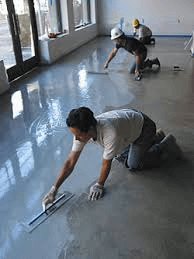
Fig 1: Float and Troweled Finish
Courtesy: concretedecor.net
After the concrete is cast in the required form, the top layer of the concrete can be smoothed out with a trowel. Trowel finishes are achieved by pouring concrete onto the desired surface and smoothing it out with a trowel in a similar manner. A trowel is a flat implement in and of itself. This procedure is used to make different patterns in the concrete, make it flat and smooth, or give it a distinct look. With the trowel finish, you might create an arch or swirl pattern.
A trowel will be easy to make a design stand out, depending on how much or how little you want it. Concrete builders, for example, can use a trowel with a coarser texture if you want a more noticeable swirl design. On the other hand, a smooth-ended trowel would be used to create a minimalistic design. The trowel method of concrete finishing is a great way to add a little something to your concrete to make it stand out and unique to your home.
2. Broom Concrete Finishes:
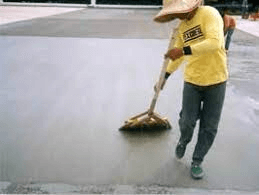
Fig 2: Broom Concrete Finishes
Courtesy: concretenetwork.com
Concrete with a broom finish is also known as brushed concrete. The broom is utilized to improve the concrete’s sleep resistance surface in this form of finishing. Broom finishes are popular because they have a high traction surface and are more durable. The broom finish surface is slip-resistant and easy to install.
Applying a broom finish concrete surface around swimming pools is common because it creates a non-slip surface critical for safety. One of the best concrete finishes for driveways is a broom finish. The look of a broom-finished concrete surface is not decorative. Run the broom in the direction of the slope on the broom finish surface to assist drain water off the surface fast.
3. Polished Concrete:
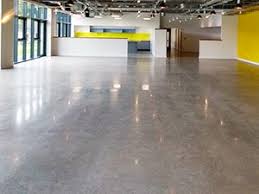
Fig 3: Polished Concrete
Courtesy: cogrigroup.com
The procedure of grinding and polishing creates the polished concrete surface. The polished concrete surfaces are extremely long-lasting and require little care. The polished concrete is constructed from existing construction materials and helps to improve natural illumination in buildings by having a high reflectivity, which saves energy by eliminating artificial lighting.
4. Colored Finish:
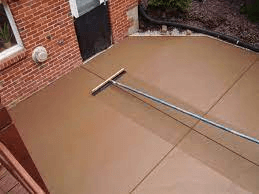
Fig 4: Colored Finish
Courtesy: solomoncolors.com
For a nice look in the surrounding environment, the colored finish of the concrete is achieved through mix-added pigments or post-cure staining. Pigment or strains can create a colored finish on a concrete surface. Colored concrete with pigments can be made by mixing the pigments directly into the concrete mix before pouring.
Stains can be applied to the concrete of any age to achieve a more intense colored finish, resulting in stressed colored concrete. The application of stain is usually followed by applying a sealant to protect the concrete surface.
5. Salt Concrete Finishes:
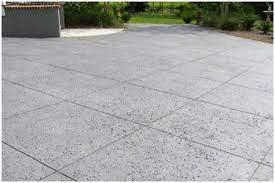
Fig 5: Salt Concrete Finishes
theconcstructor.org
The polished concrete surface is created through the grinding and polishing process. The polished concrete surfaces are exceptionally durable and low-maintenance. The polished concrete is made from recycled building materials. It has a high reflectivity, which helps to improve natural lighting in buildings and saves energy by removing the need for artificial lighting.
Plain or colored concrete gets a beautiful, rough, subtle texture and skid resistance with this coating. It’s primarily used in swimming pools and other damp environments.
6. Exposed Aggregate Finish:
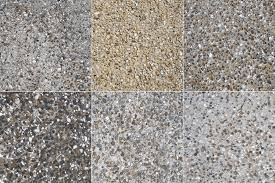
Fig 6: Exposed Aggregate Finish
Courtesy: residentstyle.com
The aggregate finish mixed in the concrete is visible in an exposed aggregate finish. The aggregates utilized in these finish styles were chosen based on their appearance. We add to the exposed look by washing away the top layer to make it stand out even more. Seashells, beautiful stones, granite, or colorful glass can be used as aggregates. When it comes to offering a non-slip surface, exposed aggregate finishes are useful and attractive.
7. Stamped Concrete:
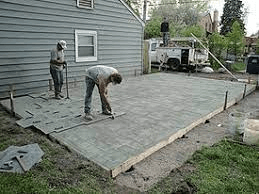
Fig 7: Stamped Concrete
Courtesy: en.wikiepedia.org
Stamped concrete is a type of ornamental concrete. The concrete finish has been molded to resemble something else. Tiles, bricks, slate, wood, and granite can all be imitated. Outside, stamped concrete is the norm. Colors can be used to enhance the effect. It is generally done to enhance the design of walks and patios. Although it is more expensive than the broom finish, the results are unquestionably superior.
8. Swirl Finish:
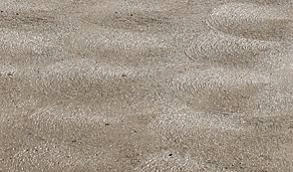
Fig 8: Swirl Finish
Courtesy: colorcrete.co.nz
Swirl finish is one of the unique types of concrete finish, created by smearing the concrete surface in a circular pattern that is equally overlapping. It gives the concrete surface an aesthetically pleasing appearance preferred for outdoor applications. It adds beauty to the surface and makes it safer to walk and stand on than a smooth surface finish, especially during the wet season.
Advantages of Concrete Finishes:
i) Durability: Concrete finishes that are properly designed outperform other types of finishes.
ii) Stiffness: Concrete finishes are exceptional structural features for carrying an additional load. They do not deflect when loaded; thus, there are no deformation issues.
iii) Cost of Maintenance: Surfaces with concrete finishes are simple to maintain, cutting maintenance expenses significantly.
iv) Energy efficiency: The thermal mass of concrete finishes is high. This enhances the indoor environment while lowering the energy required for thermal comfort.
v) High fire resistance: Since concrete is non-combustible, concrete finishes provide excellent fire resistance for concrete surfaces.
vi) Construction Speed: Concrete finishes are simple and quick to install.
vii) Water resistance: Because concrete finishes are nonabsorbent, they provide adequate water resistance.
Conclusion:
Concrete is a very versatile material that may be used for various applications. However, as you can see, there are a variety of finishes to choose from, and the one you select will affect how nice your overall end product will be. So, before you start pouring concrete, it’s critical to Fig ure out which finish style will work best for you.
References:
1. Types of Concrete Finishes – Civil Snapshot. (2021, September 26). Civil Snapshot – Civil Engineering Knowledge; civilsnapshot.com. https://civilsnapshot.com/types-of-concrete-finishes/
2. Different kinds of concrete finishes — RenovationFind Blog. (2020, July 14). Renovation Find Blog; blog.renovationfind.com. https://blog.renovationfind.com/different-kinds-of-concrete-finishes/
3. Bhople, A. (2021, September 22). 6 Different Types of Concrete Finishes | 7 Types of Wall Finishes | How to Finish Concrete | 3 Types of Concrete Finish Machines | 14 Types of Concrete Finishes for Driveways. CivilJungle; civiljungle.com. https://civiljungle.com/concrete-finishing
4. Types Of Concrete Finishes | ProEst. (2021, August 25). ProEst; proest.com. https://proest.com/construction/tips/concrete-finishes/
5.8 Types of Concrete Finishes [PDF] – The Constructor. (2020, April 15). The Constructor; theconstructor.org. https://theconstructor.org/concrete/types-concrete-finishes/39399/
6. What Is a Concrete Wall Finish? | Types of Concrete Finishes. (2021, May 31). 9To5Civil; 9to5civil.com. https://9to5civil.com/concrete-wall-finish/
If you have a query, you can ask a question here.


